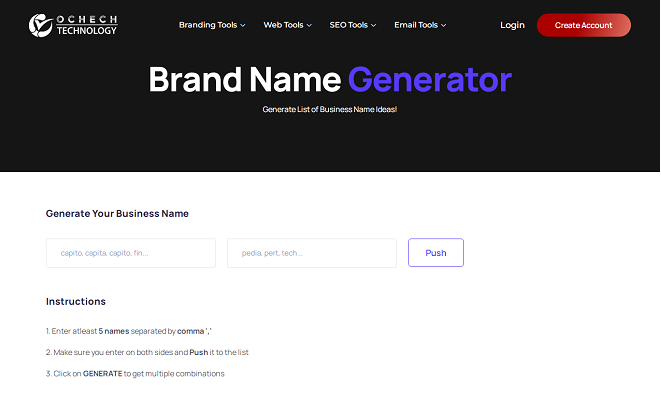
Branding A Small Business
INTRODUCTION
Branding is the process of creating and promoting a unique identity for your small business. It involves developing a clear understanding of your business's mission, values, and target audience and then using this information to create a consistent and cohesive message and visual identity. A strong brand can help differentiate your business from competitors, build trust and loyalty among customers, and ultimately drive sales and growth. Some key steps to consider when branding a small business include determining your brand identity, developing a brand strategy, creating a visual identity, communicating your brand consistently, and engaging with your audience. By following these steps, you can effectively brand your small business and stand out in the market.
Branding is an important aspect of any business, big or small. It helps to establish your business's identity and sets you apart from your competitors. A strong brand can also build trust and loyalty among your customers.
Here are some key steps to consider when branding a small business:
DETERMINE YOUR BUSINESS BRAND IDENTITY: Determining your business's brand identity is an important first step in branding. This involves understanding your business's mission, values, and personality. It helps to answer questions such as:
- What does your business do?
- What makes your business unique?
- What do you stand for?
- Who is your target audience?
To determine your brand identity, you may want to consider conducting market research to understand your competitors and the needs of your target audience. You should also consider your business's unique selling points and what sets you apart from competitors.
Once you have a clear understanding of your brand identity, you can use this information to guide the development of your brand strategy and visual identity. This will help you create a cohesive and consistent brand that resonates with your target audience.
DEVELOP A BUSINESS BRAND STRATEGY: Developing a brand strategy is an essential step in the branding process for any business. It involves defining your target audience, identifying your brand positioning, and creating a brand messaging guide.
You should consider some key steps while developing a brand strategy - Define your target audience by knowing who your product or service designed for? Understanding your target audience will help you create a brand that resonates with them. Identify your brand positioning will set how you want your brand to be perceived in the market? What makes your product or service unique? This will help you stand out from competitors. Creating a brand messaging guide that would include your brand's mission and values, as well as key messages and language to use in marketing materials. Create brand guidelines that outline how to use your brand consistently across all marketing materials, including your logo, color scheme, and tone of voice.
After following these steps, you can create a strong business brand strategy that will guide all of your branding efforts and help you effectively communicate your brand to your target audience.
CREATE A VISUAL BUSINESS IDENTITY: Creating a visual identity for your business is an important step in the branding process. It involves designing elements such as a logo, color scheme, and typography that represent your brand and help to establish your business's identity.
You should consider some key steps in creating a visual identity for your business – Determining your brand personality will help guide the design of your visual identity. For example, a serious and formal brand may want to use a more traditional design style, while a fun and playful brand may want to use more vibrant colors and a more playful design. Designing a logo is another primary visual element that represents your brand. It should be simple, memorable, and scalable. Your color scheme should be consistent with your brand personality and should be used consistently across all marketing materials. Choose font styles that reflect your brand personality and are easy to read. Lastly create brand guidelines that should outline how to use your visual identity consistently across all marketing materials.
COMMUNICATE YOUR BUSINESS BRAND CONSISTENTLY: It's important to communicate your brand consistently across all marketing materials to establish a strong and cohesive brand identity. This includes using your brand's messaging and visual identity consistently on your website, social media, and print materials.
Use your brand messaging consistently and make sure to use the same language, tone, and key messages in all of your marketing materials. Also use your visual identity consistently this includes using the same logo, color scheme, and typography across all materials. Creating your business brand guidelines which outline how to use your brand consistently and should be shared with all employees and contractors who work on marketing materials. Making sure that all of your marketing efforts align with your brand's mission and values.
ENGAGE WITH YOUR AUDIENCE WITH YOUR BUSINESS BRAND: Engaging with your audience is an important part of building a strong brand. It helps to establish relationships with your customers and build loyalty. There are many ways to engage with your audience - Using social media platforms like Facebook, Twitter, and Instagram to connect with your audience. Share updates, offers, and content that is relevant to your brand. Email marketing help Use email marketing to stay in touch with your customers and send them updates, offers, and other relevant content. Providing excellent customer service to help build trust and loyalty. This can include responding promptly to customer inquiries and addressing any issues or concerns. Host events or run promotions to engage with your audience and build relationships. Encourage your customers to share content related to your brand, such as reviews or photos of them using your product or service.
FINAL TAKEAWAY
In conclusion, branding is an important aspect of any small business. It helps to establish your business's identity and sets you apart from your competitors. A strong brand can also build trust and loyalty among your customers. Some key steps to consider when branding a small business include determining your brand identity, developing a brand strategy, creating a visual identity, communicating your brand consistently, and engaging with your audience. By following these steps, you can effectively brand your small business and stand out in a crowded market.
Feel free to contact us at Ochech Technology for you business branding & consultation.
Please help us to Like, Follow & Shear







